Harlem Courthouse
Introduction
Text-to-speech Audio
Constructed from 1891 to 1893, the Harlem Courthouse is red brick building on a brownstone base designed in the Gothic/ Romanesque Revival style of architecture. The building was first used by the Municipal and Magistrate's courts and includes 40 jail cells that have been abandoned since 1940 but rank as the oldest remaining jail cells in the city. Two murals were painted on the interior walls of a courtroom in 1938. The Harlem Courthouse is listed on the National Register of Historic Places (1980) and is a New York City Landmark (1967). The building now houses the Harlem Community Justice Center, with Family, Housing, and Civil Courts.
Images
Harlem Courthouse in 2009 photo (Americasroof)
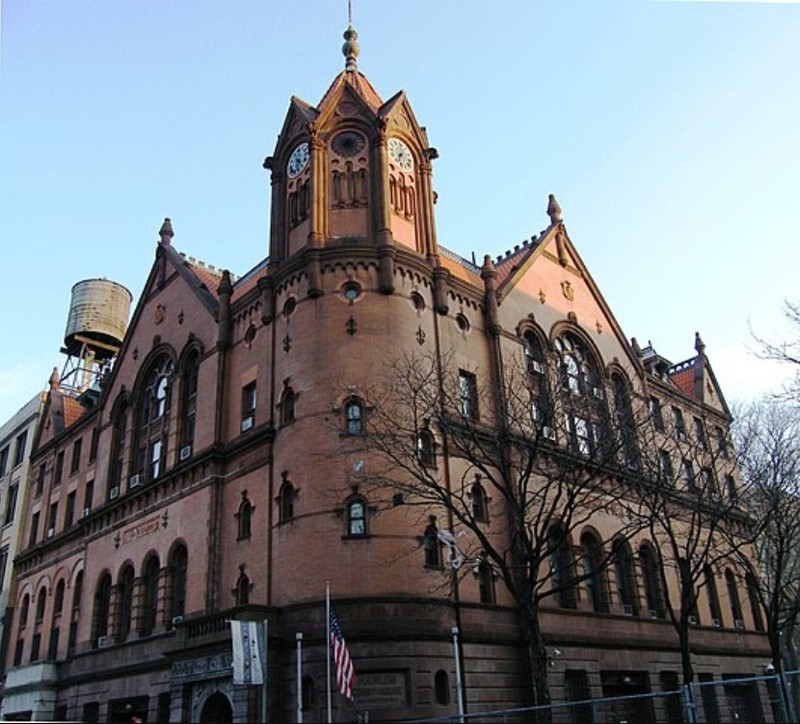
West facade of Harlem Courthouse along Sylvan Place in 1979 photo (Stephen Senigo, for NRHP)
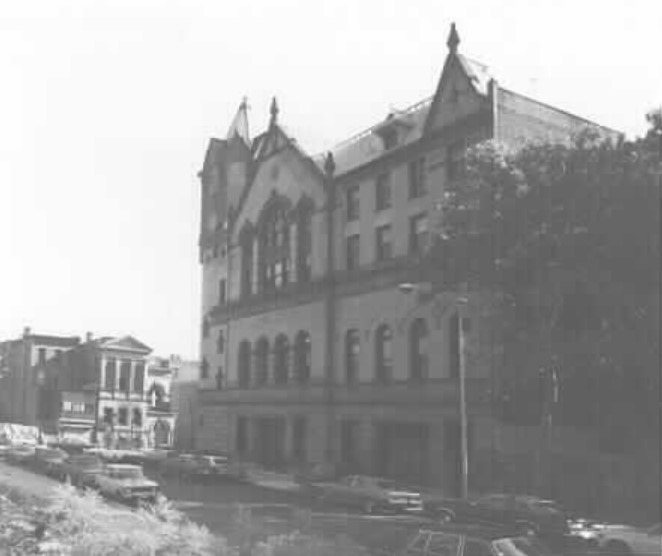
Spiral staircase inside Harlem Courthouse in 1979 photo for NRHP (Senigo)
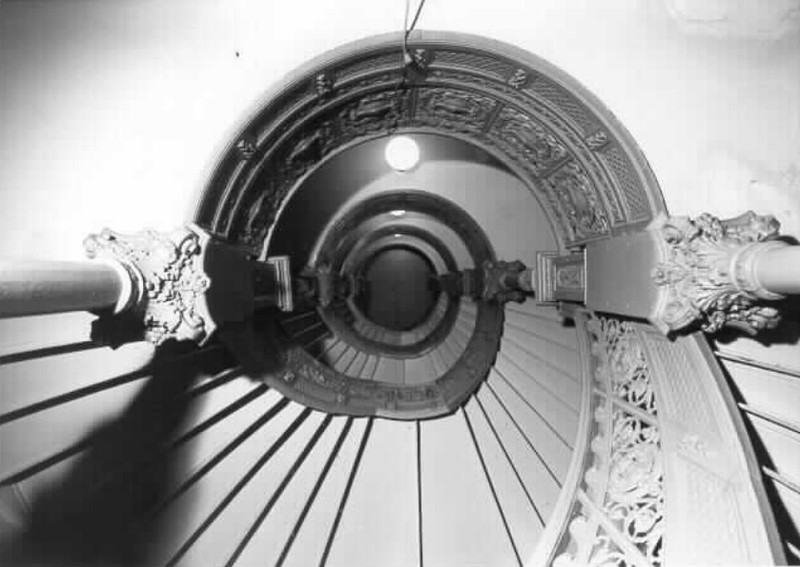
Harlem Courthouse (green arrow) on 1894 map; north to right (Bromley p. 34)
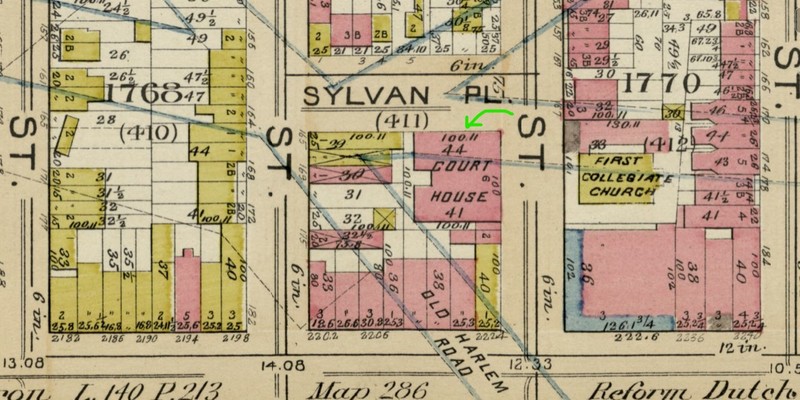
Eagle detail in interior stairwell of Harlem Courthouse (Senigo 1979)
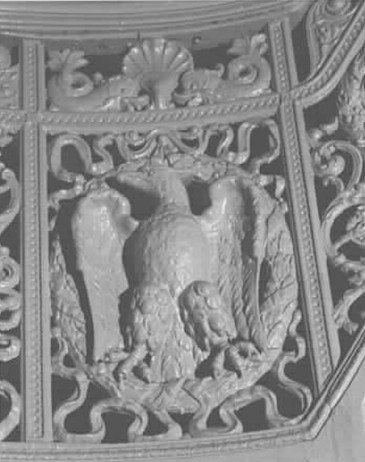
Backstory and Context
Text-to-speech Audio
The architects of the Harlem Courthouse, Thom & Wilson (Arthur M. Thom and James W. Wilson), also designed the Hampton Apartments (80-82 Perry St.) in Greenwich Village in 1887 and the Criminal Courts Building in 1890 that once stood on Centre Street. Smyth and Robinson Company built the Harlem Courthouse. The courthouse was also the county seat for New York County. The 40 jail cells in the courthouse - the Fifth District Prison - were used up to 1940 for temporary placement for prisoners heading to other jails. Heavy doors with bars fill arched entryways to the jail cells. The cells have mold and asbestos issues and were not included as part of recent renovations of the rest of the building.
The red brick of the exterior walls contrasts with bluestone band courses and decorative terra cotta panels set into the walls. Architectural highlights of the building are its round corner tower with an octagonal belfry and gargoyles, a marble and iron spiral staircase leading to the top of the tower, two exterior clocks on the tower, mosaic tile floors, and eagle motifs in the stairwells. The main entrance (on the north side) has double doors inside a granite archway supported by columns and decorated with carved cherubs holding scrolls; the Latin words inscribed above the doors translate to "Let justice be done." The north and west sides have a projecting section with an entrance that accommodates trucks. The roof is a steep Mansard style with attic dormer windows. A hand-operated elevator was still in use in 1979. The upper floor was originally used as living quarters for the wardens and their families.
The Small Claims Court room on the third floor is a two-story space with a barrel-vaulted ceiling. Murals were painted on the east and west walls of this courtroom in 1938 as part of the Works Progress Administration efforts to put people to work. The artist of the colorful works was David Karfunkle. The murals had been deteriorating due to mold damage and were covered up most of the time, waiting for renovation. The rear yard was used for recreation by the prisoners; the space is now a city park, Harlem Art Park (also a Clio entry), accessed from E. 120th Street.
The Harlem Courthouse served as the Ninth District Civil Court and the Fifth District Police Court until consolidation of city courts in 1962, when city and municipal courts moved to a new building downtown on Centre Street. The building housed several city agencies in the mid-1960s: the Parole Board, the Department of Air Pollution Control, and the Sanitation Department. By the late 1970s, the Harlem Courthouse also held several community organizations and Small Claims Court.
Sources
AFineLyne. The Harlem Courthouse: The Oldest Jail Structure Still Standing in New York City, Untapped New York. Accessed December 2nd 2021. https://untappedcities.com/2014/06/16/the-harlem-courthouse-the-oldest-jail-structure-still-standing-in-new-york-city/.
Daily News Editorial Board. "The majesty of the law: Restore the Harlem Courthouse to its fabulous glory." New York Daily News (New York) August 18th 2019. Opinion sec.
Forgotten New York. Harlem Courthouse, Forgotten New York. December 4th 2019. Accessed December 6th 2021. https://forgotten-ny.com/2019/12/harlem-courthouse/.
Framburger, David J. NRHP Nomination of Harlem Courthouse, New York, New York. National Register. Washington, DC. National Park Service, 1979.
Historic Districts Council. Harlem Courthouse, Six to Celebrate. Accessed December 6th 2021. https://6tocelebrate.org/site/harlem-courthouse/.
NYC Department of Administrative Services. Harlem Courthouse, NYC DCAS Real Estate. January 1st 2021. Accessed December 6th 2021. https://www1.nyc.gov/site/dcas/business/dcasmanagedbuildings/harlem-courthouse.page.
NYC Landmarks Preservation Commission. The Harlem Courthouse, 170 E. 121st Street, Landmark Designation Report, August 2, 1967, LP-0297. New York, NY. New York City Government, 1967.
https://en.wikipedia.org/wiki/Harlem_Courthouse#/media/File:Harlem-courthouse-170e121.jpg
New York State Cultural Resource Information System (NYS CRIS): https://cris.parks.ny.gov/Default.aspx
NYS CRIS: https://cris.parks.ny.gov/Default.aspx
Library of Congress (LOC): https://www.loc.gov/item/2010587355/
NYS CRIS: https://cris.parks.ny.gov/Default.aspx
